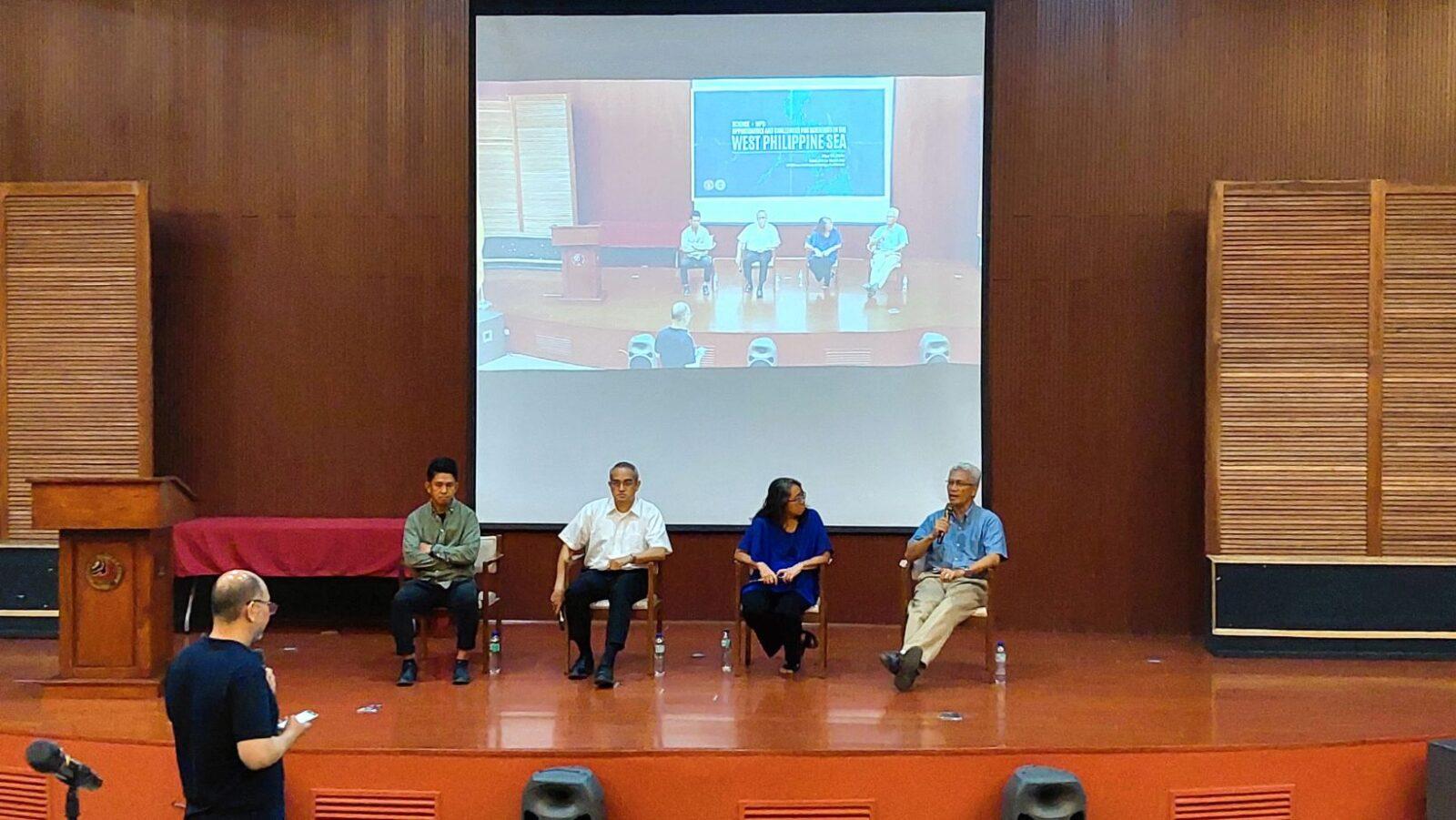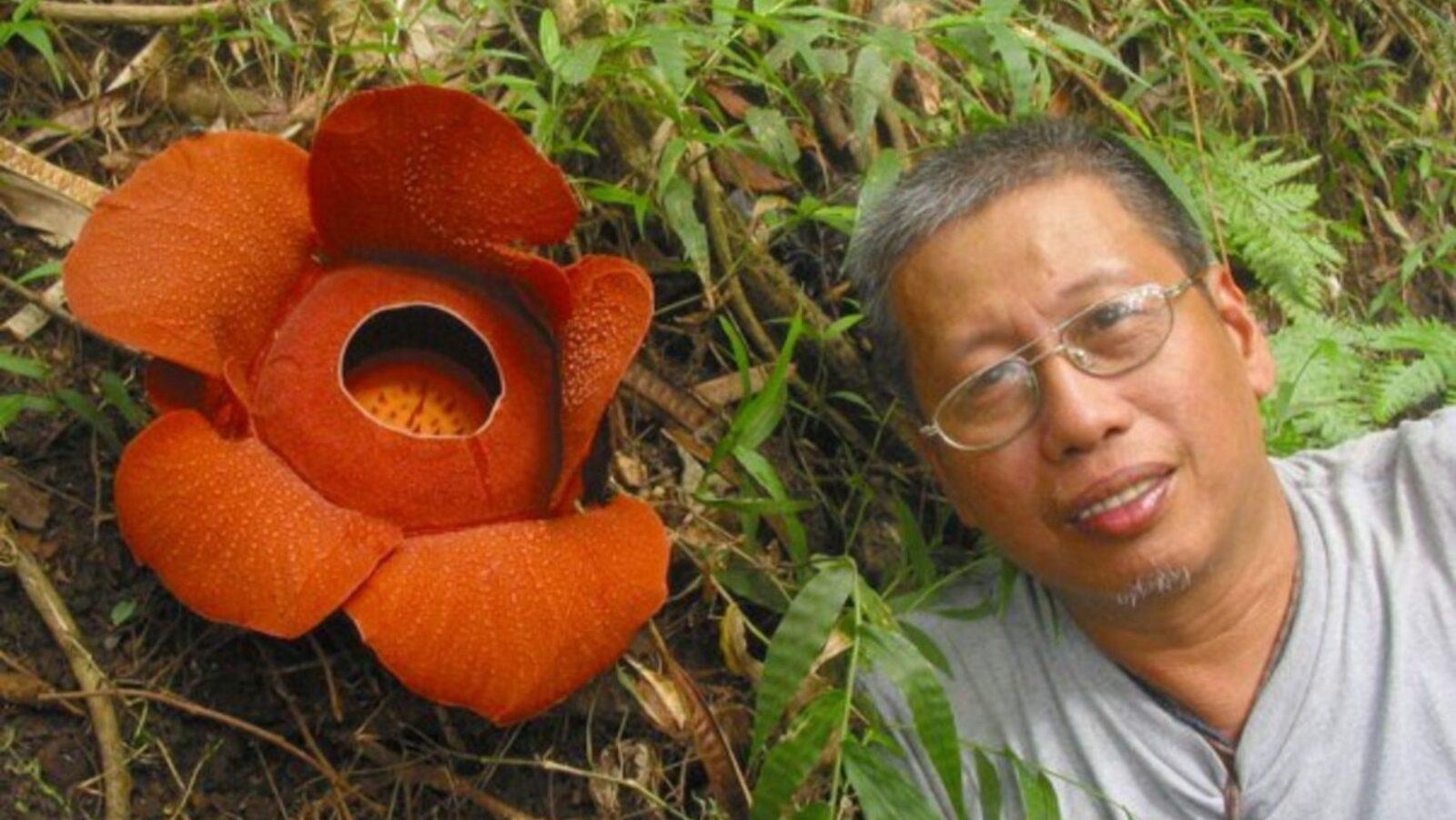
Born on December 29, 1953 to a Chinese immigrant and an Ilocano mother, Leonardo Legaspi Co had always had a keen interest in science. As a student of the Philippine Cultural High School, Co dabbled in chemistry, engineering, and geology, but it was botany that would capture his heart and engage his mind the most. This came about after his high school biology teacher, Benito Tan Sr. — who would later become an internationally recognized authority on moss taxonomy — gave Co a copy of American botanist Elmer Merrill’s Flora of Manila (which he would later spend most of his life updating) and triggered a lifelong fascination with the plant world.
In 1972, he enrolled at UP Diliman as a chemical engineering student because his father didn’t think that a career in botany would be lucrative enough. But Co knew that his true passion lay in plant taxonomy. Thus, he decided to go behind his father’s back and shift to botany in his sophomore year.
A scientist-servant
As a university student, he co-founded the UP Botanical Society (UPBS) and worked as a student assistant for revered plant anatomist Dr. Prescillano M. Zamora. Even as an undergraduate, he already had numerous plant discoveries under his belt. Under his leadership, the UPBS compiled and published a 193-page book titled “A Manual on Some Philippine Medicinal Plants” in 1977. This seminal work provided a wealth of material on Philippine flora and paved the way for the use of local herbal medicines in treating common illnesses. At the same time, he became involved in biodiversity conservation work as a research assistant for the UP Natural Science Research Center – Ministry of Natural Resources.
In 1981, Co decided to leave the university without completing his studies in order to immerse himself in the mountains of the Cordillera. There, he used his encyclopedic knowledge of botany not only to help the locals address medical concerns, but also to document and systematize their medicinal practices. After 8 years of hard work, he published a book, “Common Medicinal Plants of the Cordillera Administrative Region,” documenting 122 medicinal plants in the Cordillera Region. This would eventually serve as an invaluable reference for the development of over 50 community-based health programs nationwide.
A prolific, passionate botanist
After his immersion in the Cordilleras, Co returned to Manila to work as a pharmacologist at the Acupuncture Therapeutic and Research Center. Later on, he worked as a field botanist for the Philippine chapter of Conservation International (CI), taking on consultancy work for various environmental impact assessment projects on the side. As a field botanist for CI, he explored the forests of the Sierra Madre, Palawan, and Eastern Mindanao to perform biodiversity monitoring.
In 2007, he founded the Philippine Native Plant Conservation Society, Inc. (PNPCSI) to champion the conservation of native flora and their natural habitats. Through this organization and his participation in similar organizations like the Wildlife Conservation Society of the Philippines and Laksambuhay Conservation, Inc., he was able to mobilize and inspire an entire generation of Filipino biologists to pursue a career in taxonomy and advocate for biodiversity conservation.
Co’s lack of academic credentials did not stop him from outshining other Filipino biologists with advanced degrees. Growing up in a multicultural, multilingual family, Co was a polyglot who could read, write, and speak in Mandarin, Hokkien, English, Filipino, and Ilocano. Being able to read Chinese monographs and revisions proved to be an important asset in his professional life, because it expanded and deepened his knowledge on Philippine plants.
An unparalleled taxonomist
Co’s unique life context and competencies blended together to make him the foremost expert on Philippine taxonomy. Not only did he have working knowledge on at least 10,000 plant species, but he was also able to discover eight new species of plants in the country. A prolific writer-researcher, he wrote and contributed to a total of six books and thirteen articles in peer-reviewed publications from 1977 to 2009.
In recognition of the numerous and unmatched contributions he had made to the field of Philippine botany, Co was conferred a BS in Botany degree by his alma mater in 2008, over three decades after he entered the university. But this much-awaited distinction would very soon be followed by heart-wrenching news.
On November 15, 2010, Co, farmer Julius Borromeo, and forest guard Sofronio Cortez were shot dead in the forests of Kananga, Leyte. The Philippine Infantry claims that the good scientist and his faithful companions were caught in a crossfire between them and the New People’s Army. However, firsthand evidence from the two survivors of the attack and forensic analysis strongly contradict this assertion.
Justice delayed, justice denied
Twelve years after Co’s brutal death, his case remains unsolved, with his family and friends still crying for justice. Despite calls to raise the charges to murder, his killers have only been charged with reckless imprudence resulting in multiple homicide. Court hearings continue to this day, with no proper resolution in sight.
Co pursued his career without the intention of making a fortune. Instead, he wanted to be of service to his people and his country. He used his position as the country’s top plant taxonomist to document, save, and protect Philippine forests and biodiversity. His unexpected demise at the age of 56 after a professionally distinguished, though not financially rewarding, career left his immediate family (his wife Glenda and daughter Linnaea Marie) in a difficult position.
To help Co’s loved ones shoulder the piling costs, artist Raxenne Maniquiz sold posters mapping the various species of Rafflesia, a type of parasitic plant found in the Philippines. It featured Rafflesia leonardi, a species that Dr. Julie Barcelona, Co’s former colleague, named in his honor. Co’s passion and legacy also live on in the form of Co’s Digital Flora of the Philippines, a “checklist of vascular plants native to the Philippine archipelago” that continues Co’s work.—MF
Those that want to help with the court expenses of Leonard Co’s family can send donations directly to Glenda Co’s accounts (information provided by the UP Institute of Biology Representatives via Manila Bulletin):
GCash – 0916-436-1370
PNB – 2484-1304-8926
BPI – 1669-058-043
References
- https://www.bulatlat.com/2010/11/20/leonard-co-scientist-for-the-people/
- https://www.cecphils.org/after-8-years-still-no-justice-for-slain-environmental-defender-and-scientist-leonard-co/
- https://www.cecphils.org/bayani-ng-kalikasan-leonard-co/
- https://chr.gov.ph/wp-content/uploads/2018/01/CHR-2010-Annual-Accomplishment-Report.pdf
- https://cinemata.org/view?m=ms6NPFDuV
- https://essc.org.ph/content/view/413/153/
- https://www.gmanetwork.com/news/topstories/nation/206324/no-crossfire-when-botanist-leonard-co-was-shot-witness-says/story/
- https://www.herbalgram.org/resources/herbalgram/issues/89/table-of-contents/obit_co/
- https://interaksyon.philstar.com/trends-spotlights/2022/08/05/224277/justice-for-leonard-co-fundraiser-drive-slain-leonard-co/
- https://iskomunidad.upd.edu.ph/index.php/Leonardo_L._Co
- https://mb.com.ph/2022/08/11/nearly-12-years-after-esteemed-botanists-killing-justice-remains-out-of-reach/
- https://www.philippineplants.org/AboutLeonard.html
- https://pinoyweekly.org/2010/11/remembering-leonard-co/
- https://www.rappler.com/nation/245050-justice-elusive-slain-botanist-leonard-co/
- https://verafiles.org/articles/doj-chr-urged-to-investigate-death-of-botanist-2-others









